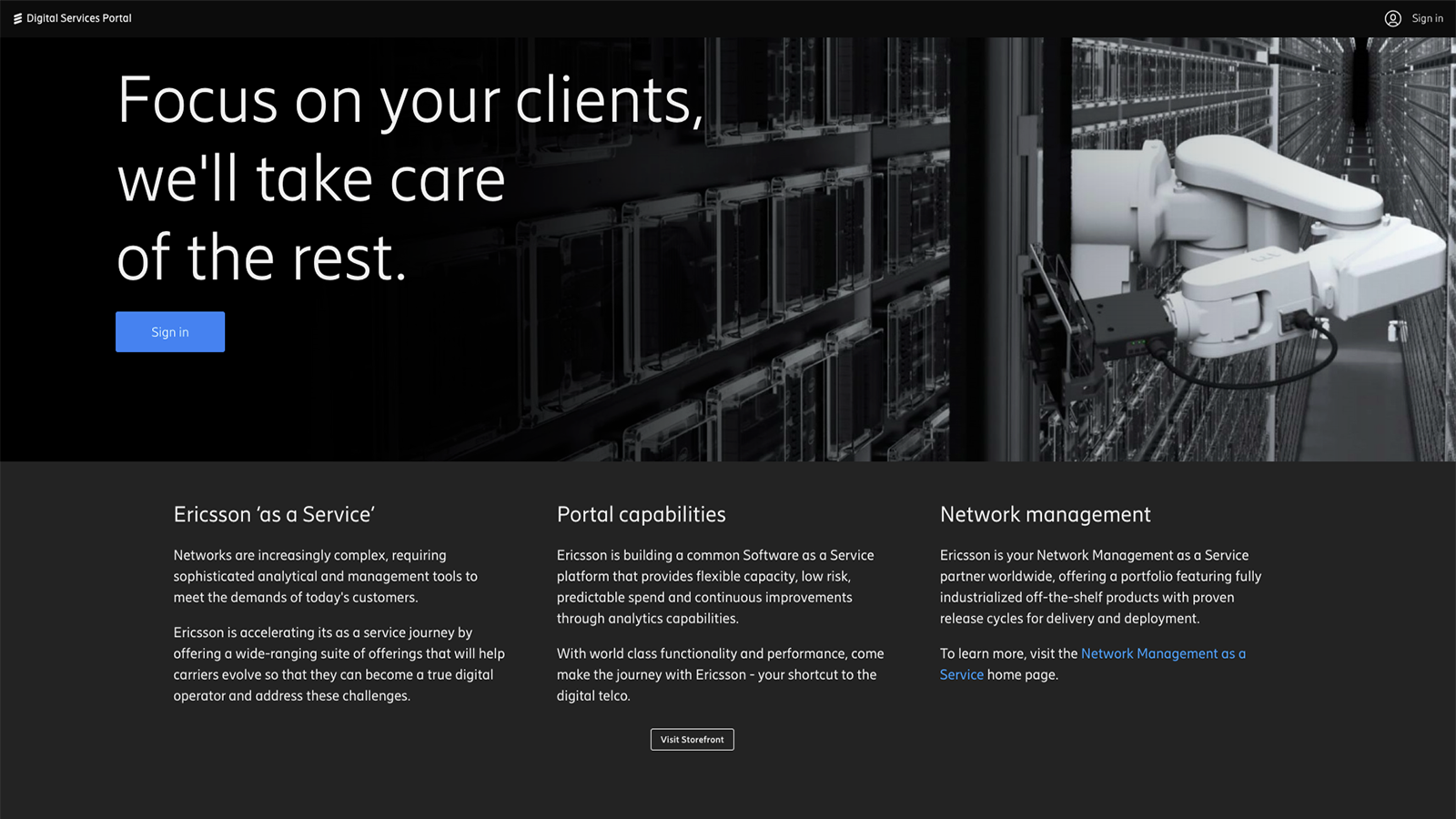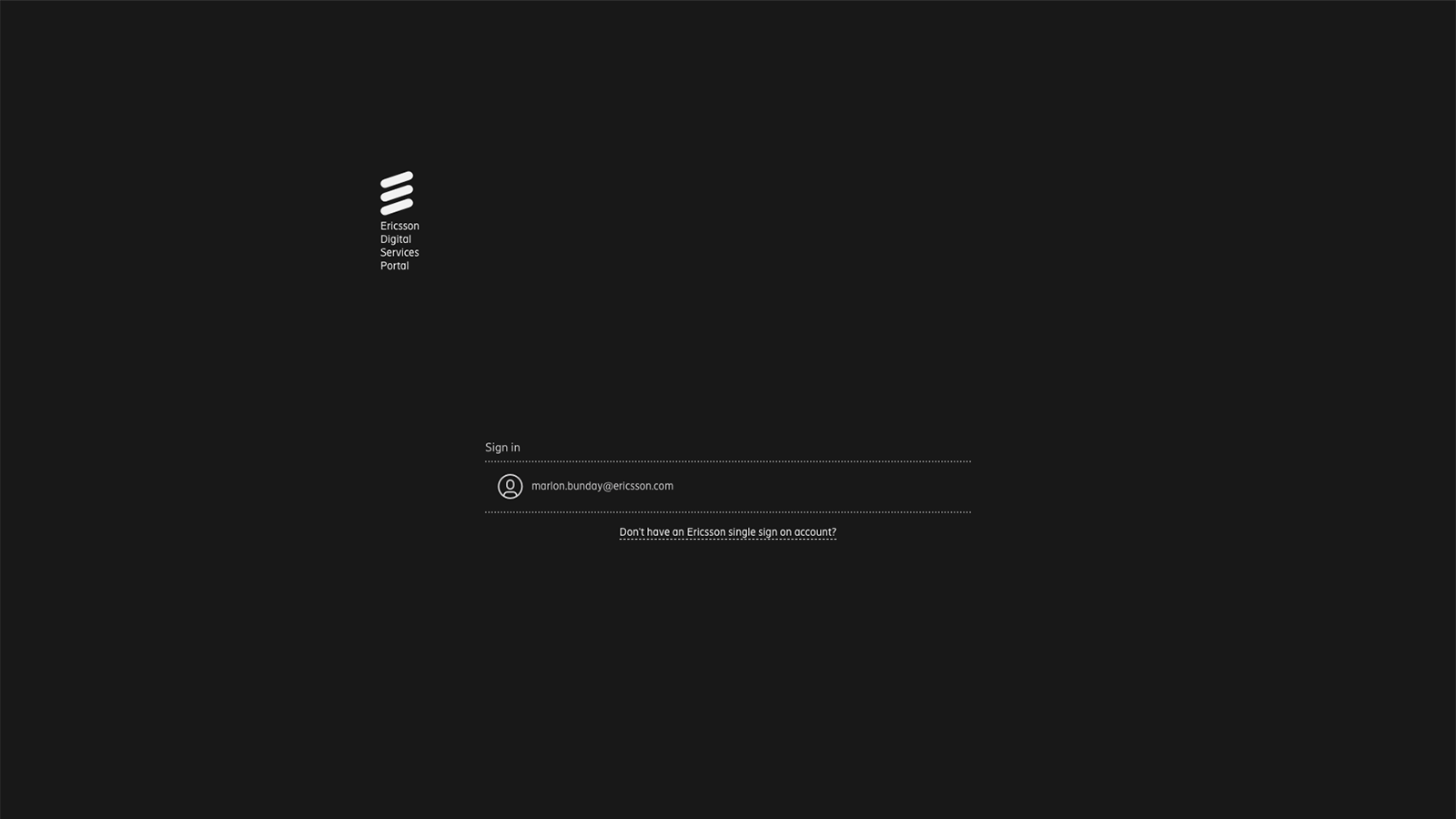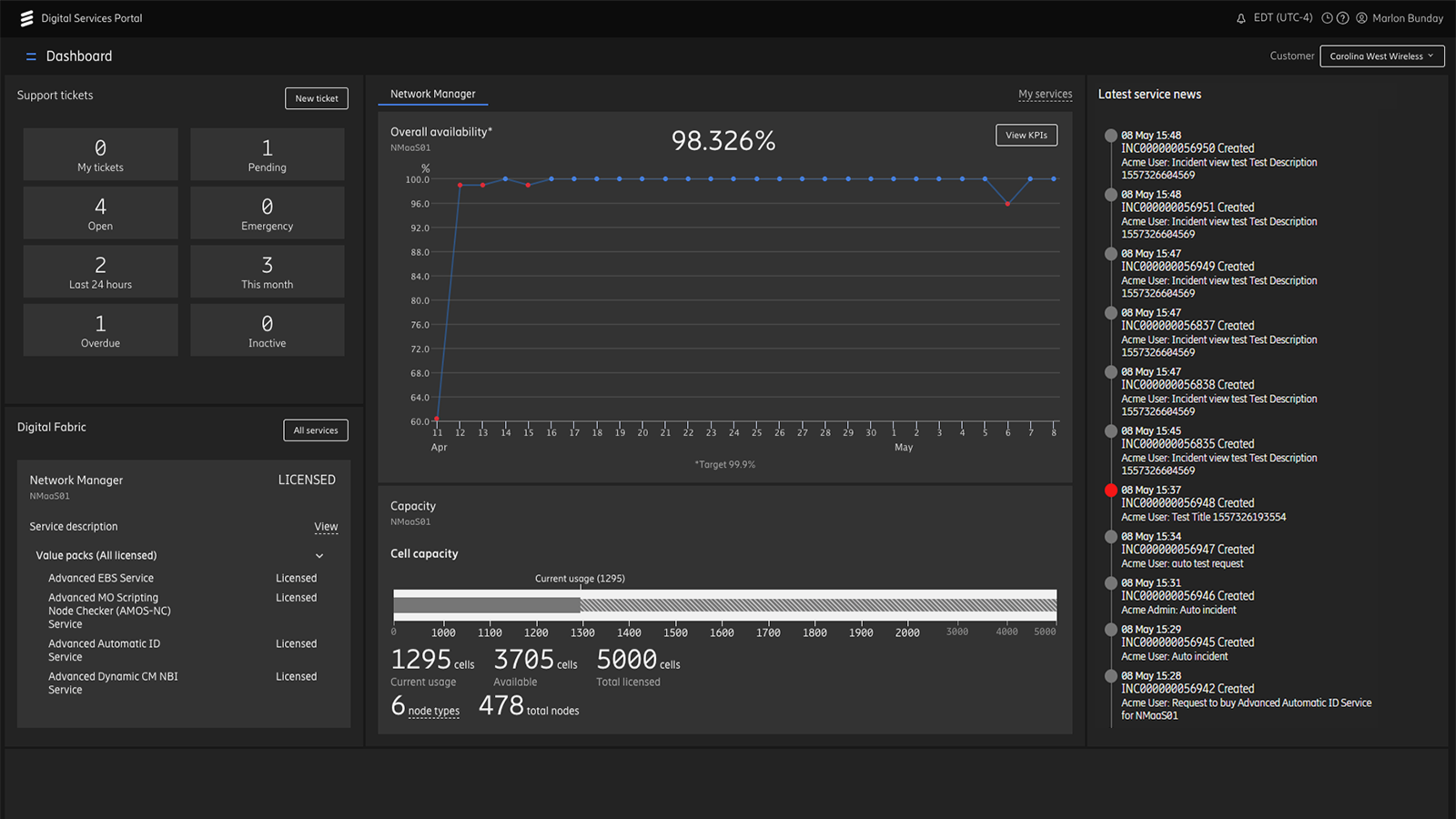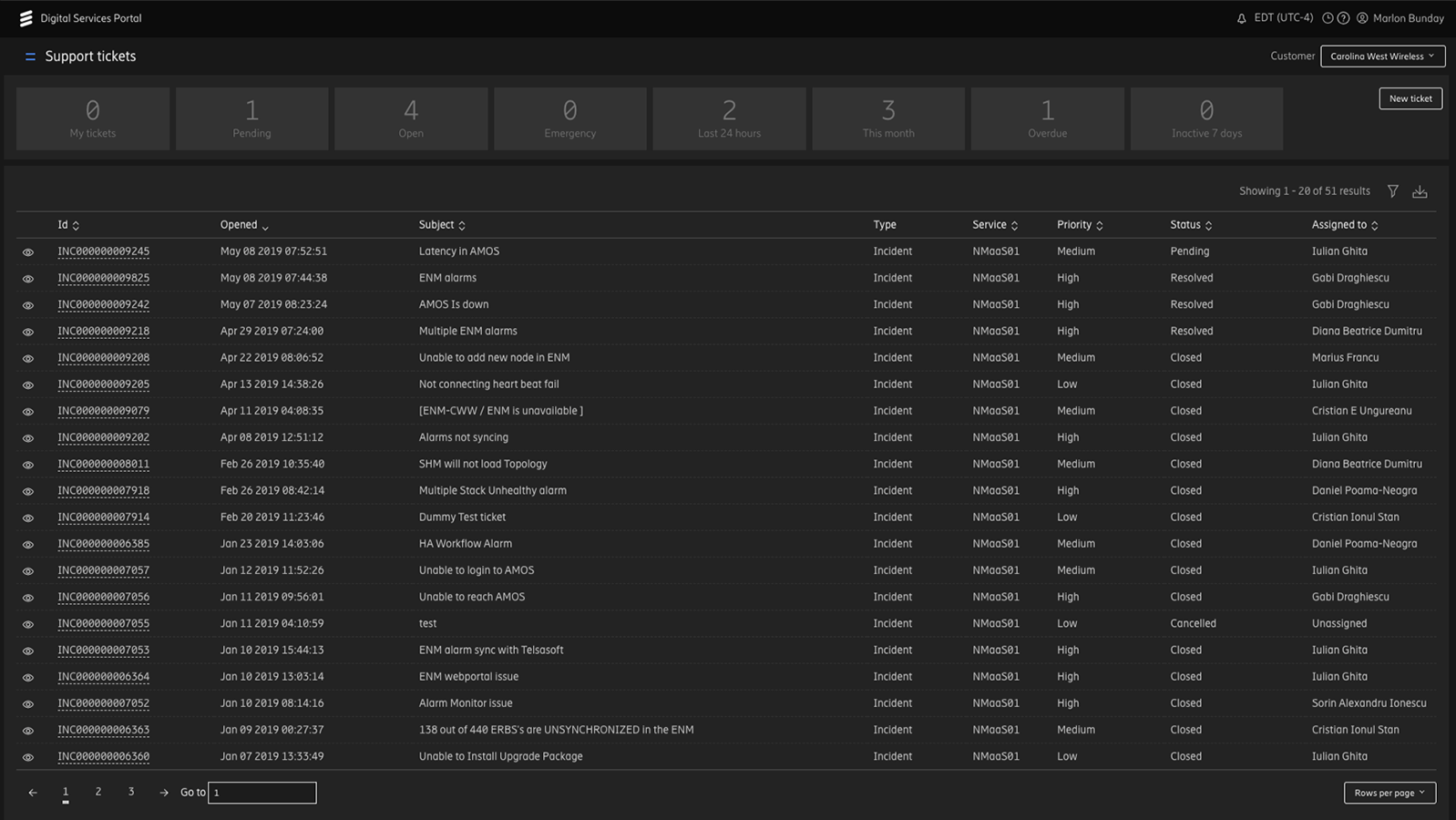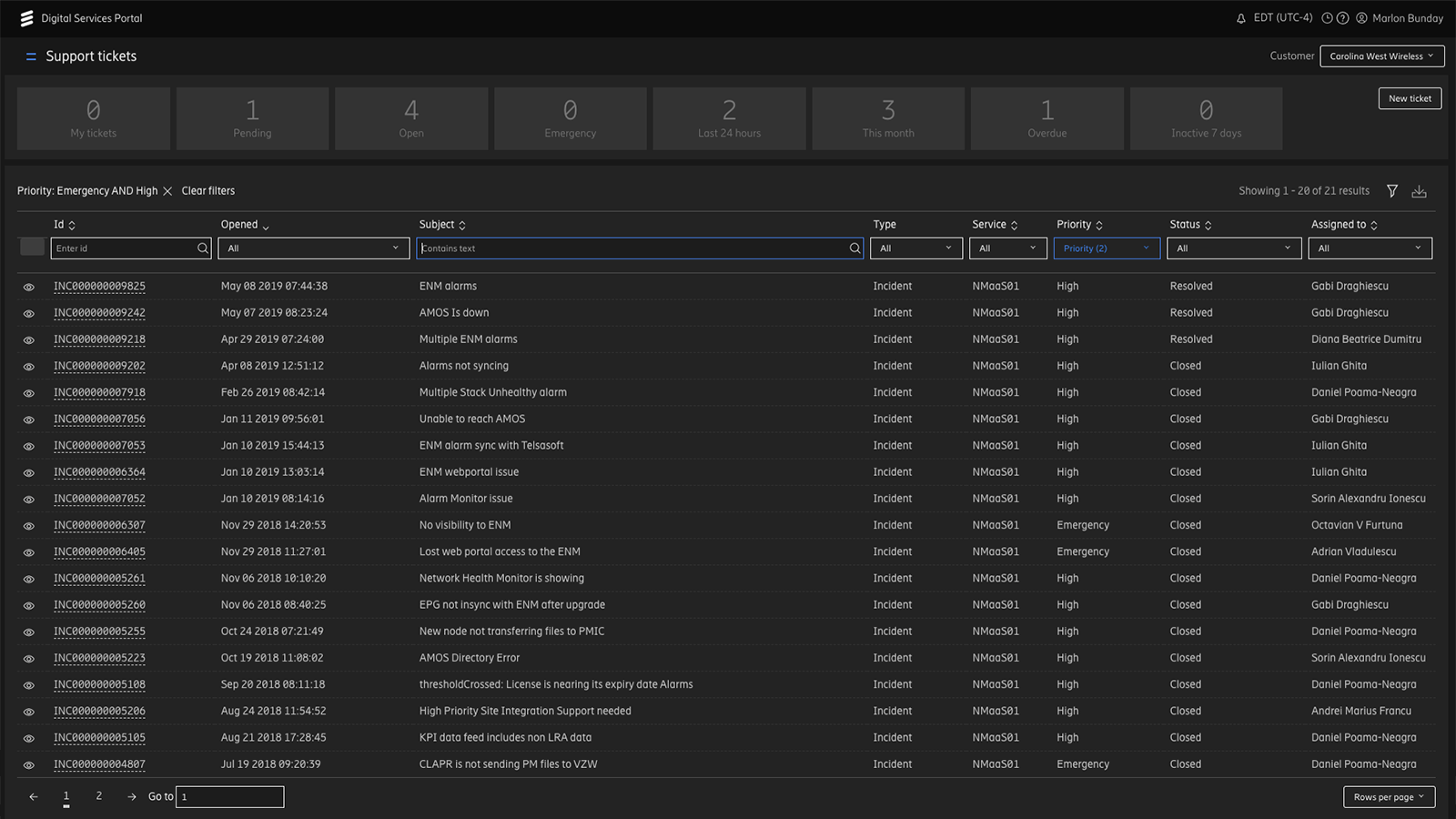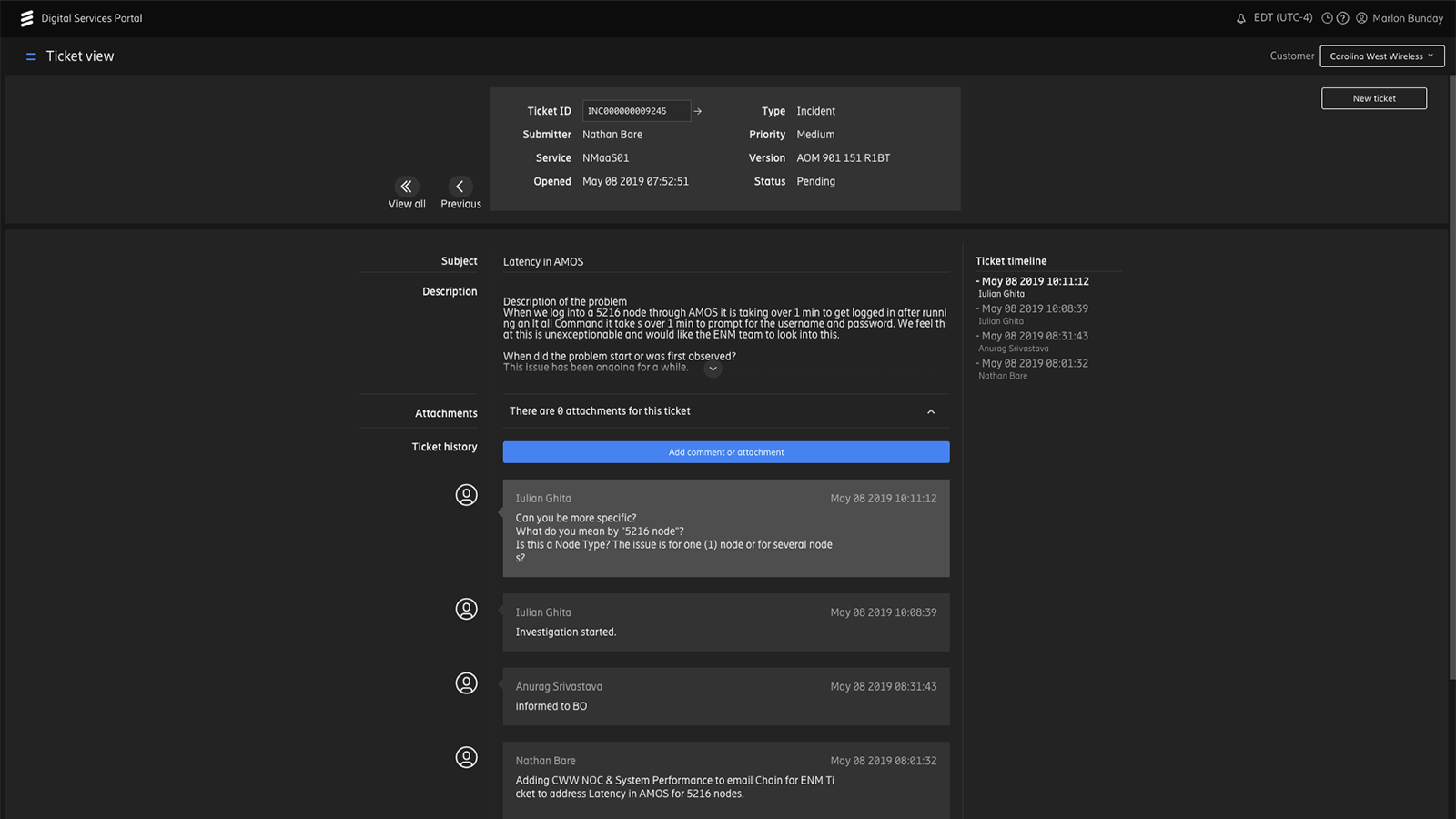Ericsson Telecommunications
Case Study Details
Date September 2017 to February 2020
Client Ericsson Telecommunications
Project Ericsson Digital Services Portal
Role Lead Designer
Tools Balsamiq / Sketch / Invision / Jira / Photoshop / Illustrator
“Marlon has brought great imagination, pragmatism, energy and humour to the table in all our interactions on this project. He has acted as a tremendous bridge between technical teams and the end user, developing a UX that works for both groups. He has adapted to the various frameworks and design standards required, while still bringing flair and creativity.”
Introduction
Ericsson, a leading Swedish multinational networking and telecommunications company, embarked on a transformative journey to offer cloud-based "as a Service (aaS)" products and services. To facilitate this transition and enhance the user experience for both Ericsson and its customers, I was contracted as the Lead UX Designer to create the Ericsson Digital Services Portal (EDSP). This case study outlines the UX design process, challenges and outcomes of this project.
Project Context
Client: Ericsson
Location: Ericsson Software Campus in Athlone, Ireland, with remote work and occasional on-site visits
Objective: To design a dashboard-based portal, EDSP, for small mobile network operators (10000 cells or less) to monitor and manage their cloud services, initially for US-based networks.
Project Scope and Goals
Develop a unified "as a Service" operations portal.
Consolidate day-to-day service operations management, incident management, knowledge management, SLAs/KPIs/reports and user access into a single platform.
Cater to the distinct needs of two primary user groups: Ericsson customers and Ericsson employees.
Discovery and Research
Conducted an extensive evaluation of the project's scope and competitive landscape.
Created personas and defined the portal's information architecture (see Fig 1.1 below)
Established initial user flows, including login, password retrieval, network propagation and incident management.
Developed low- and high-fidelity wireframes for the dashboard, the initial design concept of which remained largely unchanged throughout the project and indeed is still live today.
Fig 1.1 Sitemap and user flow for Ericsson Digital Services Portal
Users and Audience
Identified two main user groups, from which I drafted several proto personas (see Fig 1.2 below):
Ericsson Customers: Highly skilled and tech-savvy individuals.
Ericsson Employees: Front- and back-office staff.
Designed the portal to meet the specific needs and skills of these users, with a focus on creating a robust incident management system.
Fig 1.2 An example of the proto personas created
User Testing and Usability
Faced challenges in usability testing due to restrictions on accessing front- and back-office Ericsson staff working in off-shore shifts and that most mobile network operators were mainly based in the United States.
As a result, I introduced an extensive guerrilla usability testing system, integrating sessions within Agile sprints and setting up usability test stands at Ericsson offices.
Utilised the annual Ericsson Tech Day with 1400+ attendees for additional guerrilla usability testing.
The Tech day also allowed me to attempt live usability fixes, conducting user testing sessions followed by real-time issue assessment and resolution, which was highly innovative and successful.
Outcome and Reflection
Collaborated within an Agile project methodology alongside a high-performance team of front- and back-end developers.
Successfully launched the EDSP, which is now live and fully operational with numerous Ericsson customers. This is not a public domain site but you can view a few screens from the Sketch files below.
Anticipated continued growth for the portal as additional Ericsson services are introduced.
Conclusion
The Ericsson Digital Services Portal (EDSP) project represented a significant milestone in Ericsson's transition to cloud-based services. By addressing the unique needs of both customers and employees and leveraging guerrilla usability testing and live issue resolution, the project achieved its goals.
The EDSP now serves as a critical tool for managing Ericsson's cloud services, with potential for further expansion and enhancements in the future. This project exemplifies the value of user-centric design in facilitating digital transformation within a multinational corporation like Ericsson.

